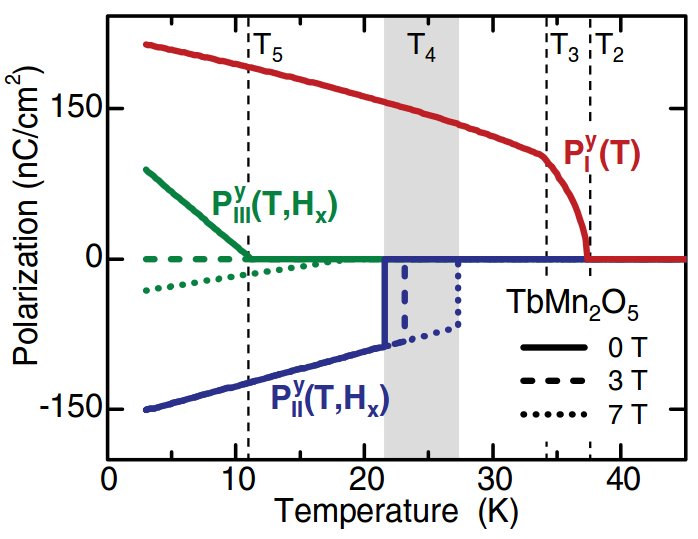Landau Theory of Ferroic Phase Transitions
Landau theory is a powerful theory employed to describe transitions between phases of different symmetry. Therefore it is ideally suited to describe phase transitions into long-range ordered ferroic phases – which is our main research interest!
Ferroic materials are described by the loss of point symmetry operations like spatial rotations, inversion (r to -r), and time reversal (t to -t). By expanding the so-called free energy in terms of a suitable order parameter, Landau theory allows the prediction of possible stable phases and their symmetry. Further calculations allow to determine the microsocpic structure of these phases and how they are affected by applied external fields (like electric and magnetic fields, strain, pressure and temperature).
We are attempting to describe the phase diagram and predict new physical properties (like...) for a variety of complex multifunctional oxides. We are doing this in collaboration with several experts on Landau theory. Some of the topics investigated by us are:
- Establishing ferrotoroidicity as fourth independent form of ferroic order. Here, "independent" refers to showing that ferrotoroidicity may exist as primary (non-induced/improper) form of ferroic order and not just as a sub-class of antiferromagnetism.
- Identifying multiple contributions to the magnetically induced polarization in multiferroics with more than one magnetic sublattice.
- Unusual phase transitions in multiferroics (such as "triggered" phase transitions where two forms of long-range order occur simultaneously and are thus coupled, but evolve independently otherwise)
Reference
- N. Leo, D. Meier, R. V. Pisarev, N. Lee, S.-W. Cheong, M. Fiebig: Independent Ferroelectric Contributions and Rare-Earth-Induced Polarization Reversal in Multiferroic TbMn2O5, Physical Review B 85, 094408 (2012)
